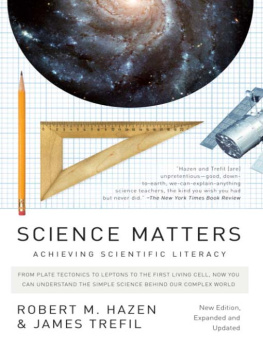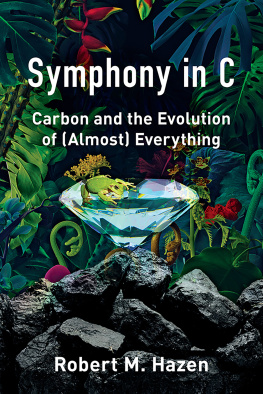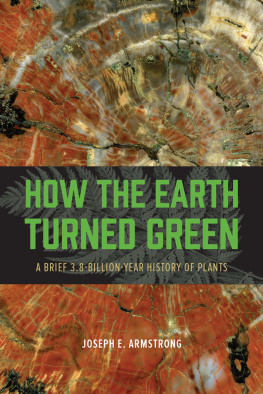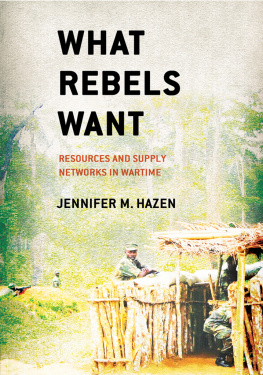
THE STORY OF EARTH
THE STORY OF
EARTH

The First 4.5 Billion Years,
from Stardust to Living Planet
_________________________
ROBERT M. HAZEN
VIKING
VIKING
Published by the Penguin Group
Penguin Group (USA) Inc., 375 Hudson Street, New York, New York 10014, U.S.A. Penguin Group (Canada), 90 Eglinton Avenue East, Suite 700, Toronto, Ontario, Canada M4P 2Y3 (a division of Pearson Penguin Canada Inc.) Penguin Books Ltd, 80 Strand, London WC2R 0RL, England Penguin Ireland, 25 St. Stephens Green, Dublin 2, Ireland (a division of Penguin Books Ltd) Penguin Books Australia Ltd, 250 Camberwell Road, Camberwell, Victoria 3124, Australia (a division of Pearson Australia Group Pty Ltd) Penguin Books India Pvt Ltd, 11 Community Centre, Panchsheel Park, New Delhi110 017, India Penguin Group (NZ), 67 Apollo Drive, Rosedale, Auckland 0632, New Zealand (a division of Pearson New Zealand Ltd) Penguin Books (South Africa) (Pty) Ltd, 24 Sturdee Avenue, Rosebank, Johannesburg 2196, South Africa
Penguin Books Ltd, Registered Offices: 80 Strand, London WC2R 0RL, England
First published in 2012 by Viking Penguin, a member of Penguin Group (USA) Inc.
10 9 8 7 6 5 4 3 2 1
Copyright Robert M. Hazen, 2012
All rights reserved
LIBRARY OF CONGRESS CATALOGING-IN-PUBLICATION DATA
Hazen, Robert M., 1948
The story of Earth : the first 4.5 billion years, from stardust to living planet / Robert M. Hazen.
p. cm.
Includes index.
ISBN: 978-1-101-58068-4
1. Earth. I. Title.
QE501.H325 2012
550dc23 2011043713
Printed in the United States of America
Designed by Carla Bolte
Time Lines by Jeffrey L. Ward
No part of this book may be reproduced, scanned, or distributed in any printed or electronic form without permission. Please do not participate in or encourage piracy of copyrighted materials in violation of the authors rights. Purchase only authorized editions.
ALWAYS LEARNING
PEARSON
To Gregory:
Change will come;
may you have the wisdom and courage to adapt
CONTENTS
____________


Introduction
 One of the most arresting images of the twentieth century is a photo of Earthrise, taken in 1968 by a human traveler in orbit around the Moon. We have long known how precious and special our world is: Earth is the only known planet with oceans of water, with an atmosphere rich in oxygen, with life. Nevertheless, many of us were unprepared for the breathtakingly stark contrast between the utterly hostile lunar landscape, the lifeless black void of space, and our enticing marbled white-on-blue home. From that distant vantage point, Earth appears alone, small, and vulnerable but also more beautiful by far than any other object in the heavens.
One of the most arresting images of the twentieth century is a photo of Earthrise, taken in 1968 by a human traveler in orbit around the Moon. We have long known how precious and special our world is: Earth is the only known planet with oceans of water, with an atmosphere rich in oxygen, with life. Nevertheless, many of us were unprepared for the breathtakingly stark contrast between the utterly hostile lunar landscape, the lifeless black void of space, and our enticing marbled white-on-blue home. From that distant vantage point, Earth appears alone, small, and vulnerable but also more beautiful by far than any other object in the heavens.
We are justifiably captivated by our home world. More than two centuries before the birth of Christ, the polymath Greek philosopher Eratosthenes of Cyrene conducted the earliest documented experiment on Earth. He based his ingenious measurement of Earths circumference on the simple observation of shadows. In the equatorial town of Syene, Egypt, at noon on the summer solstice, he observed the Sun directly overhead. A vertical post cast no shadow. By contrast, on the same day at the same time in the coastal city of Alexandria, some 490 miles to the north, a similar vertical post cast a slight shadow, thus revealing that the Sun was not quite directly overhead in that location. Eratosthenes employed the geometrical theorems of his Greek predecessor Euclid to conclude that Earth must be a sphere, and he calculated that it must have a circumference of about 25,000 milesremarkably close to the modern established value of 24,902 miles around the Equator.
Throughout the centuries, thousands of other scholars, a few with names revered but most lost to history, have probed and pondered our planetary home. They have asked how Earth was formed, how it moves through the heavens, what its made of, and how it works. And most of all, these men and women of science have wondered how our dynamic planet evolved, how it became a living world. Today, because of our remarkable and cumulative knowledge, and because of the wonders of human technology, we know more about Earth than ancient philosophers could have fathomed. Of course we dont know everything, but our understanding is rich and deep.
And while our knowledge of Earth has increased since the dawn of humankind, refined over the millennia into a fixed understanding, much of that progress has revealed that the study of Earth is the study of change.
Many lines of observational evidence point to the fluctuating nature of Earth year by year, epoch by epoch. Rhythmically layered or varved sediment deposits in some glacial lakes in Scandinavia display more than thirteen thousand years of alternating coarser and finer particlesthe consequences of swifter erosion during annual spring thaws. Frozen glacial drill cores from Antarctica and Greenland reveal more than eight hundred thousand years of seasonal ice accumulations. And deposits of paper-thin sediment layers from Wyomings Green River Shale preserve more than a million years of annual events. Each of those layerings rests atop vastly older rocks, which themselves hint at grand cycles of change.
Measurements of gradual geological processes point to even more immense spans of Earth history. The formation of the massive Hawaiian Islands required slow and steady volcanic activity, successive lava blankets piling up over tens of millions of years. The Appalachians and other ancient rounded mountain ranges are the result of hundreds of millions of years of gradual erosion punctuated by great landslides. The sometimes herky-jerky motions of tectonic plates have shifted continents, elevated mountains, and opened oceans over the course of geological history.
Earth has always been a restless, evolving planet. From core to crust, it is incessantly mutable. Even today the air, the oceans, and the land are changing, perhaps at a pace unequaled in our planets recent past. We would be foolish not to care about these unsettling global changes, and indeed for many of us, it seems impossible that we wouldntour curiosity and care for our home comes as naturally to us as it did to Eratosthenes. But we would be equally foolish to address the current state of Earth without taking full advantage of what it already tells us about its surprising storied past, about its unpredictable dynamic present, and about ourselves and our place in its future.
Most of my life has been spent trying to understand our vibrant, complex, changeable home. As a boy, I collected rocks and minerals, cramming my room full of fossils and crystals, side by side with random bugs and bones. My entire professional career has followed that Earth-centric theme. I began with experiments at the submicroscopic scale of atoms, studying the molecular structure of rock-forming minerals, heating and squeezing tiny mineral grains to document the pressure-cooker-like effects of Earths deep interior.
With time, my view expanded to the grander spatial and temporal tapestry of geology. From the deserts of North Africa to the ice fields of Greenland, from the shores of Hawaii to the peaks of the Rockies, from the Great Barrier Reef in Australia to ancient fossilized coral reefs in a dozen nations, Earths natural libraries reveal a multibillion-year story of coevolution shared by elements, minerals, rocks, and life. As my research program shifted to the plausible roles of minerals in lifes ancient geochemical origins, I have reveled in studies that suggest that the coevolution of life and minerals through Earth history is even more striking than previously imaginedthat not only do certain rocks arise from life, as evident in limestone caverns across the continent, but that life itself may have arisen from rocks. Over four billion years of Earth history, the evolutionary stories of minerals and lifegeology and biologyhave intertwined in astonishing ways that are only now coming into focus. In 2008 these ideas culminated in an unconventional paper on Mineral Evolutiona controversial new argument that some welcomed as perhaps the first paradigm shift in mineralogy in two centuries, while others viewed it warily, as a possibly heretical reframing of our science in the context of deep time.
Next page















 One of the most arresting images of the twentieth century is a photo of Earthrise, taken in 1968 by a human traveler in orbit around the Moon. We have long known how precious and special our world is: Earth is the only known planet with oceans of water, with an atmosphere rich in oxygen, with life. Nevertheless, many of us were unprepared for the breathtakingly stark contrast between the utterly hostile lunar landscape, the lifeless black void of space, and our enticing marbled white-on-blue home. From that distant vantage point, Earth appears alone, small, and vulnerable but also more beautiful by far than any other object in the heavens.
One of the most arresting images of the twentieth century is a photo of Earthrise, taken in 1968 by a human traveler in orbit around the Moon. We have long known how precious and special our world is: Earth is the only known planet with oceans of water, with an atmosphere rich in oxygen, with life. Nevertheless, many of us were unprepared for the breathtakingly stark contrast between the utterly hostile lunar landscape, the lifeless black void of space, and our enticing marbled white-on-blue home. From that distant vantage point, Earth appears alone, small, and vulnerable but also more beautiful by far than any other object in the heavens.